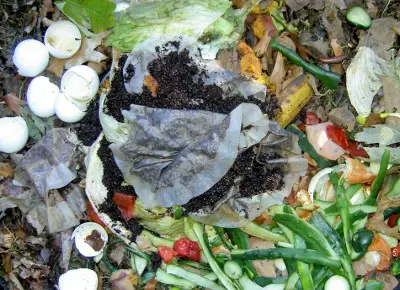This step by step tutorial of how to turn compost into gardening gold in other words … amazing fertilized gardening soil. Compost is organic matter that has been decomposed and recycled as a fertilizer and soil amendment. Compost is a key ingredient in organic farming.
Composing organisms require four equally important ingredients to work effectively:
* Carbon – for energy; the microbial oxidation of carbon produces the heat, if included at suggested levels. High carbon materials tend to be brown and dry.
* Nitrogen – to grow and reproduce more organisms to oxidize the carbon. High nitrogen materials tend to be green (or colorful, such as fruits and vegetables) and wet.
* Oxygen – for oxidizing the carbon, the decomposition process.
* Water – in the right amounts to maintain activity without causing anaerobic conditions.
Microorganisms:
With the proper mixture of water, oxygen, carbon, and nitrogen, micro-organisms are allowed to break down organic matter to produce compost. The composting process is dependent on micro-organisms to break down organic matter into compost. There are many types of microorganisms found in compost of which the most common are:
* Bacteria – The most numerous of all the microorganisms found in compost.
*Actinobacteria – Necessary for breaking down paper products such as newspaper, bark, etc.
* Fungi – Yeast help break down materials that bacteria cannot, especially lignin in woody material.
* Protozoa- Help consume bacteria, fungi and micro organic particulates.
* Rotifers- Rotifers help control populations of bacteria and small protozoans.
In addition, earthworms not only ingest partly composted material, but also continually re-create aeration and drainage tunnels as they move through the compost.
A lack of a healthy micro-organism community is the main reason why composting processes are slow in landfills with environmental factors such as lack of oxygen, nutrients or water being the cause of the depleted biological community.
* Start your compost on earth – This allows worms and other beneficial organisms to aerate the compost and be transported to your garden beds.
* Lay twigs or straw first, a few inches deep – This aids drainage and helps aerate the pile.
* Add compost materials in layers, alternating moist and dry – Moist ingredients are food scraps, tea bags, seaweed, etc. Dry materials are straw, leaves, sawdust pellets and wood ashes. If you have wood ashes, sprinkle in thin layers, or they will clump together and be slow to break down.
* Add manure, green manure – (clover, buckwheat, wheatgrass, and grass clippings) or any nitrogen source. This activates the compost pile and speeds the process along.
* Keep compost moist – Water occasionally, or let rain do the job.
* Cover with anything you have – wood, plastic sheeting, carpet scraps. Covering helps retain moisture and heat, two essentials for compost. Covering also prevents the compost from being over-watered by rain. The compost should be moist, but not soaked and sodden.
* Every few weeks give the pile a quick turn with a pitchfork or shovel – This aerates the pile. Oxygen is required for the process to work, and turning “adds” oxygen. You can skip this step if you have a ready supply of coarse material, like straw.
Once your compost pile is established, new materials should be added by mixing them in. Mixing, or turning, the compost pile is key to aerating the composting materials and speeding the process to completion.
Please LOOK BELOW to read the remaining part of the article.
Photo Source

Click here to read the source:
.

